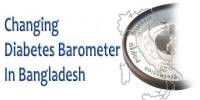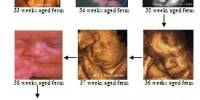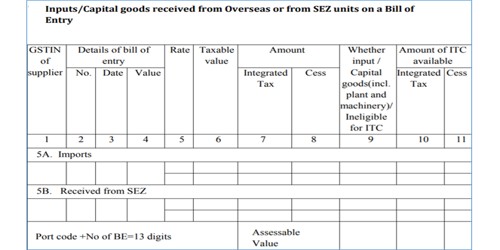1. Introduction:
Agriculture is the backbone of the economy in Bangladesh, providing livelihood for 85% of the population. Agricultural production accounts for about one third of the gross domestic product and about 32% of the expert earnings. The production of food grain has increased in Bangladesh by more than twice from 11.08 million ton in 1970-71 to 24.30 million ton in 1999-2000, leading the country towards self-sufficiency in food grains (Rahman, 2000). Current trends point towards an expansion in agricultural productivity to feed the hungry millions. The demand of cereals by the year 2020 has been projected to reach 37.5 million tons at the annual growth rate of 3% (Karim, 1998). Though there has been rapid progress in developing some new technologies, such genetically engineered, yield-increasing transgenic plants there is some question whether the new-technologies can be a major factor for increasing food production in the developing countries by 2020 (Ruttan, 1991).
Consequently future strategies will have to focus on raising productivity by using available more efficiently than in the past. It is estimated that insect pests destroy about one third of the harvest (Hawladar and Matin, 1988) and yield would probably declined by 30-75% without crop protective chemicals. The effectiveness of pest management over the past 40 years is linked, in large part, to the effectiveness of chemical pesticides. In 1981, the government removed pesticide subsidies and assigned the procurement and distribution of pesticides to the private sector (ADB, 1987). Pesticides use has increased from none in 1955 to 6000 tons in 1991 (Huq et. al., 1995). Agrochemicals, including pesticides, are considered a critical aid to improve agricultural production and prevention of crop losses pre and post harvest. But the use of pesticides has caused a phenomenal degradation of our environment and has created a great concern for those exposed to the pesticides and the eventual consumers of the society.
Although, the volume and magnitude of the use of pesticides are low in this country, abuse and non-adherence to the instructions cause pesticide health hazards and long term residual effects are obviously surfacing everyday. There has been a steady increase in the number and amount of residues of pesticides in our food and soil and also there is a destruction of natural predators (frogs, snakes, fishes etc.) has caused importation and dumping of toxic chemicals to save our crop.
2. Pesticide and its classification:
Pesticides are deliberately designed to alter the balance of ecology that is to eliminate or restrict undesirable species in favor of species considered desirable for man’s continued existence.” The Ideal Pesticide is a chemical which stays at the place of application through its active period, are toxic to particular pests. But harmless to other organisms including man; is easily used; is able to breakdown into harmless products in the environment within a reasonable times, and must at the same time be cheap to produce”. (Kumar, 1986)
Pesticides are commonly classified: On the basis of target objects, Chemical structures, Degradability, Ionic formation, Hazardous properties. In the following paragraph. WHO recommended classification of pesticide by Hazard is shown which was published by Asian Development Bank.
Pesticide toxicity more generally refers to the toxicity of the active ingredient. According to the FAO International Code of Conduct on the Distribution and Use of Pesticides (1986), hazard is the likelihood that a pesticide will cause an adverse effect or injury under the conditions in which it is used. The World Health Organization recognizes that various factors influence acute hazard classification and addresses these issues in their document, WHO Recommended Classification of Pesticides by Hazard: Guidelines to Classification (1986-87).
The classification, which distinguishes between the various hazard classes of pesticide formulations, is based on the acute oral and dermal toxicity of the active ingredient, its concentration in the formulation, and its physical state.
- WHO Recommended Classification of Pesticides by Hazard
Hazard Class LD50 for Rats (mg/kg body weight)
Oral Dermal
Solids Liquids Solids Liquids
IA Extremely Hazardous 5 or less 20 or less 10 or less 40 or less
IB Highly Hazardous 5-50 20-200 10-100 40-400
II Moderately Hazardous 50-500 200-2000 100-1000 400-4000
III Slightly Hazardous Over 500 Over 2000 Over 1000 Over 4000
Note: The terms “solids” and “liquids” refer to the physical state of the formulation being classified.
(Source: WHO Recommended)
3. Trends in Pesticide Consumption:
Pesticide use in Bangladesh was started from mid 1950s and gained momentum in late 1960s with the introduction of green revolution through the use of HYV rice in the country. Before this period, the farmers were not aware of the use of chemical pesticides. However, they were accustomed to use casually in stored products the hand-made coarse powder of chips of dried plant materials like Tobacco leaves, Neem leaves, Dhutura leaves, Ashes and sometimes Neem oils. But with the introduction of HYV crop particularly the IR-20 in the late ‘50s, the farmers were motivated to use insecticides giving free of cost.
Thus through the import of only 3 tons of insecticides, which include the chlorinated hydrocarbons like Endrin, DDT, BHC, etc., the synthetic chemical pesticides entered the pest control scenario of Bangladesh in 1956. Since then, pesticides, particularly the insecticides came into limelight and started gaining momentum and continued their uptrend during the initial phase of Green Revolution era 1960 to 1970. The Government later on reduced subsidy on pesticides by 50% in 1974 and totally by 1980. The withdrawal of subsidy initially caused a slight decrease in the consumption. But immediately after a short lapse the consumption again started the increasing (DAE, 2000).
4. Use of Pesticides in Bangladesh:
a. By Category:
Pesticide use by category over 9 years indicates that during the period, insecticides upheld the highest position in the trend curve followed by fungicides and herbicides, the lowest being the rodenticides (Fig. 2). However, the figure indicates a sharp rise in use of fungicide in 1996-97 and herbicide in 1998-99. The consumption of pesticide by category in 1999-2000 indicates the largest share (91% FP and 68% AI) occupied by insecticides followed by fungicides (6% FP and 28% AI) and herbicides (2% FP and 4% AI) (DAE, 2000)
b. By Chemicals Class:
Although the use of pesticides started with Endrin, BHC and DDT belonging to chlorinated hydrocarbons, at present almost all of the insecticides in use belong to organophosphates, carbamates, and synthetic Pyrethroids. As shown in table 3, insecticides comprising a total of 31 common names have been used in 1999, of which only 1 belongs to miscellaneous class. The market share of 12814 tons FP and 1595 tons AI of different classes of insecticides is shown in Fig. 4, which reveals that in terms of FP, carbamates shared the highest proportion (64%) followed by organophosphates (35%) while in terms of AI the organophosphates shared the highest proportion (68%) followed by carbamates (31%). In both FP and AI, a negligible percent belong to other classes of insecticides. (PAB,2000).
c. By Formulation:
The choice of formulation of pesticides by the farmers of Bangladesh is mostly influenced by the ease in application, price and purpose of use. During 1991-92 to 1999-2000 three major formulations such as granules, liquid and powder of insecticides are in use (Fig. 5a and 5b). In general, the granule formulations are preferred in using in rice because no equipment is necessary for its application and is safe in handling. Out of 12814 tons FP of insecticides used in 1999, all the classes were used maximum in granule forms followed by liquid form as shown in Fig. 5c. (PAB, 2000).
5. Pesticide Market and Marketing:
In 1979, the marketing of pesticides has been privatized and since then there are 18 companies involved in pesticide marketing. The farmers do not use all the registered pesticides. Out of 113 registered pesticides only 60 have been marketed in 1999 (Rahman et. al., 1995). Among the 18 companies of pesticide marketing, the highest share (32.02%) belonging to Novartis (Bangladesh) Limited, followed by Padma Oil Company Limited (13.46%), Shetu Pesticides Limited (9.12%) and ACI Limited (9.11%).
6. Degradation of Pesticides:
Photodecomposition:
Radiant energy is strongly absorbed by soil and consequently little photodecomposition of pesticides would be expected except on or very near to the surface. Several insecticides and herbicides have been shown to decompose when applied experimentally on dry soil in thin layers exposed to sunlight (Khan, 1980). Natural photosynthesis, for example, humic substance, may also play a role in facilitating degradation of soil pesticides (Matsumura, 1973).
Chemical Transformation:
Removal of pesticide residues in the soil is not complete until the parent compound has been mineralized by 100% and the only reaction products remaining are carbon dioxide, methane, inorganic nutrients and natural humus compounds. Khan (1980) has concluded that reactions are mediated by waters functioning as a reaction medium, a reactant or both. The major process of chemical transformation is chemical hydrolysis. Nucleophilic substitution reactions, other than hydrolysis, take place with reactants dissolved in water or with group in soil organic matter (Connell and Miller, 1984).
Microbial Degradation:
It is the method by which microbs help to remove pesticides from soils. Certain polar groups on the pesticide molecules, such as –OH, -COO-, and –NH2, provide points of attack for the organisms. The organophosphate insecticides, such as parathion are degraded quite rapidly in soil, apparently by a variety of organisms. The most widely used herbicides, such as 2,4-D, the phenylureas, aliphatic acids, and the carbamates and degraded readily attached by a host of organisms (Brady and Weil, 2002).
7. Adsorption of Pesticides:
Bailey and White, 1970 have suggested four structural factors which influence its adsorption on soil colloids:
I. Nature of functional group(s), such as alcohol (-C-OH), ketone (>C=O), carboxylic acid (-COOH), or amine (NH2).
II. Nature of substituting groups, which tend to alter the behavior of functional groups.
III. Position of substituting groups with respect to the functional group which may enhance or hinder intermolecular bonding.
IV. Presence and magnitude of unsaturation in the molecule, which affects the lyophylic-lyophobic balance.
8. Movement of Pesticides in Soil:
Movement of pesticide through soil can occur by two processes such as- MASS FLOW and DIFFUSION. Mass flow of pesticide results from the mass flow of water and/or soil particles, with which the pesticide molecule is associated. Pesticides, which have high adsorption coefficients, are relatively immobile in the soil (Letey and Farmer, 1974). Diffusion processes are involved either directly or indirectly in the fate and behavior of pesticides in soils. Diffusion of pesticides through soils depends on a number of soil properties including water content (Shearer et al., 1973), air filled porosity (Call, 1957) and temperature (Ehlers et al., 1969) and on certain chemical properties of the pesticides such as solubility, vapor density and the diffusion coefficient (Goring, 1962).
9. Persistence of Pesticides:
The duration of effectiveness of a pesticide or the “lasting power” is the persistence time. A persistent pesticide pollute the environment because it may remain in soil long enough-
a. To be assimilated by plants and accumulate in edible portion;
b. To adhere to edible portions of root crops;
c. To be transported with eroding soil particles to nearby water ways, or
d. To accumulate in earth warms and then show up in high levels in birds feeding on the warms. Such problems are absent or are less significant for the compounds that do not endure in nature (Alexander, 1977).
The persistence of pesticides range from few days to many years. DDT and other chlorinated pesticides may persist for 3 to 20 years or longer.
In general, Organo-chlorine pesticides persist in the environment and are not easily degradable, and Organophosphate or Carbamate pesticides degrade more rapidly but they are more toxic since they inhibit the Cu enzyme Cholinesterase, of animal nervous system (De, 2000).
10. Fate of Pesticides in Soil:
Once they reach the soil the pesticides move in one or more of seven directions.
These directions are-
1. They may vaporize into the atmosphere without chemical change;
2. They may be absorbed by soils;
3. They may move downward through the soil in liquid or solution form and be lost from the soil by leaching.
4. They may undergo chemical reactions within or on the surface of the soil;
5. They may be broken down by soil microorganisms;
6. They may wash into streams and rivers in surface runoff; and
7. They may be taken up by plant or soil animals and move up the food chain (Brady and Weil, 2002).
11. Resons of Pesticide Hazards:
Pesticides and their residues, by necessity, are poisonous and there is a growing concern that the increasing use of pesticides in agriculture may harm the environment and even pose pesticide health hazards to human and animals (Cremlyn, 1978). In Bangladesh pesticide use in crops is around 16200 t/year of which about 70% is used in rice (DAE, 1997). One of the demerits of pesticide usage is that they regularly strike at non-target species as well as the species for which they are intended. Pilmentel (1983) reported that only less than 1% of the applied insecticide actually reaching its insect target. Moreover, pesticides application is not always confirmed to the intended areas.
The potential hazard from pesticides in Bangladesh are caused due to the following reasons (Anon., 1991)
About 98% farmers using pesticides have no training on pesticides;
While using pesticides, the farmers do not use protective clothings and equipments;
Farmers use the public sources of water like ponds, river/canals etc., indiscriminately for washing their bodies, contaminated clothings and equipments after pesticide application;
Safe storage of pesticides at the farm level is not ensured; about 50% of the farmers store the pesticides in places which are easily accessible to children;
Unsafe disposal of the used containers;
Ignorance about Integrated Pest Management (IPM).
The problems of pesticide use in Bangladesh lie not only in its excessive use but also its indiscriminate use of many of the banned as well as hazardous pesticides particularly belonging to “Dirty Dozens”- chlorinated hydrocarbons are used in the country. They are available at cheap price because of their illegal entry through the bordens. Some of such pesticides are Tatafen, Gama50, Thiodan, XW-50, Tiand, Butachlor, etc. (ASIP, 2000).
Other causes include inadequate research to generate necessary technical information in Bangladesh context, inadequate initiative to create users awareness and technical skill, inadequate registration, monitoring and quality control system, total dependence on import (ASIP, 2000).
12. Effect of pesticide on soil:
Most Bangladesh soil contain much less than 2% organic matter (Bhuia et. al.1974), which is rapidly degraded with pesticides ( Sattar et. al.1992a;1992b). the humus fraction of Bangladesh soils are greatly affected by urea and pesticides or their combinastions ( Sattar, 1990; Sattar and Chowdhury, 1991). Dimecron and melathion produce distinct influence on fats, waxes and oils, resin, polysaccharides and hemicellulose contents in soils (( Sattar 1994).
12.1 Effect on agro-ecosystems:
The magnitude and severity of pesticide-related problems very greatly among different types of agro-ecosystems. Therefore to identify the actual or potential effects of pesticides, it is important to first determine the type of agro-ecosystems in which the pesticides are to be applied, e.g. types and abundance of nontarget organisms (wildlife and livestock). In addition, both the selection of pesticides and the intensity of their use depend upon the prevailing crops and cropping patterns. Lastly, because of the differences in bio-physical features of the environment, such as soil, surface waters and groundwater depth, the mobility and eventual distribution of pesticides and pesticide residues will very greatly among different agro-ecosystems (ADB,1987).
12.2 Effect of pesticides on soil respiration:
Soil respiration is affected mostly by nonselective and eradicate-type chemicals, i.e. fungicides and fumigants, which posses broad killing or inhibiting powers, causing maximum disruption of the soil microflora. The axiom of Kreutzer (1965) is appropriate here:
The reinvasion potential in a soil after treatment is directly proportional to the degree and “depth’ of kill.
The degree of killing, or inhibition, increases with increasing pesticide concentration and time of exposure. Thus, the more drastic the biocidal effect, the greater the potential for recolonization of the treated soil (Guenzi et.al.1981).
12.3 Effect on Microbes:
There is continuing concern that pesticides may adversely affect various soil microflora (Parr, 1974) The following direct effect of pesticides on soil microbial aspects, which in turn influence plant growth, can be stated:
• Changes in the popul;ations of Azotobacter, Rhizobium, cellulolytic microorganisms and dissolving microorganisms, which determine soil fertility.
• Changes in the number of nodules and lateral roots of nodulation legumes and effects on mycorrhizal symbioses in plant.
• Changes in quantitative aspects of seversl microorganisms in soil which disrupt the microbiological equilibrium.
• Alternations in the nitrogen balance in soil by change in the growth and activity of nitrifying bacteria-Nitrosomonas and Nitrobacteria and
• Interference with ammonification in soil.
a. Inhibition of Nitrification by pesticide:
Goaring et. al. (1975) reported that most pesticides either inhibit nitrification or have no effect. Tu (1994) conducted an experiment with 14 insecticides and observed that nitrification was inhibited for two weeks by 10µg/g soil doses but there was no lasting effects of insecticides on soil microbes.
b. Effect on symbiotic N2-fixation:
Pesticides have effect on both legume plant and N2-fixing microbes (belonging to the genera Rhizobium and Bradyrhizobium). Pesticides are used as seed dressing on as pre-emergent soil application. They may affect the inoculant rhizobia, or soil population of rhizobia, or they may interfere with module initiation and development (Gibson, 1977).
Rahman et. al. (1995) studied the inhibition of four pesticides on the growth of soil Rhizobium and found that the spectrum of inhibition increased with increasing concentration on pesticides.
12.4 Impact on Crop Protection:
The average potential loss of different crops caused by insect, pests, diseases and rodents in rice are 15.8%, 9.9% and 1.5% respectively. In certain years and in certain places, crop losses of more than 35% or even 80-100% have been reported for a single insect or disease, especially in case of rice. An estimate of annual loss due to insect pests alone has been reported as 16% for rice, 11% for wheat, 20% for sugarcane, 25% for vegetable, 15% for jute and 25% for pulses (Alam et. al., 1981; Khan,1991).
Pesticide may remain on a crop after application to protect against pests in the field and in storage. These residues either on grains, vegetables or foods cause direct poisoning. One major environment catastrophe related to pesticide came to be known in the year 1972, when 500 deaths and occur 6500 people were affected by poisoning after consuming seed grains treated with “Methylmercuric chloride” fungicide (Philip, 1995).
In Bangladesh recently pesticides are using indiscriminately for quick ripening of fruites during storage. Such use of pesticides can directly cause poisoning to human being like that occurred in Iraq in 1972. More over the application of pesticides on leafy vegetables and on other fruiting vegetables may cause the same effect.
13. Effect on water:
Drifting pesticides or their metabolites contaminate water. These may be more persistent or toxic than the pesticides itself, for example DDT to DDE and Malathion to Malaxon and Isomalathion (Hassall, 1990; Maddy, 1983). Pesticides residues in water in various parts of Bangladesh showed widwspread presence of DDT and its toxic metabolites, Lindane and Dieldrin. The presence of Heptachlore in surface and ground water was found at levels well above WHO-recommended limits (Rahman, 2000). Bangladesh coastal water is likely to receive water borne residues of pesticides and insecticides spread upstream.
In Bangladesh bout 90% pesticides used on rice, which is grown under submerged condition. So it may cause damage like-
• Fishes raised in rice fields are consumed by farmers which may contain high levels of toxins and adversely affected them.
• If water suitable or transportable formulation of pesticides are applied, the material may move into nontarget areas and thus contaminate local water resources (ADB, 1987).
13.1 Biomagnification and its effect of organisms:
Pesticides that are transported from crop fields to the water ways; enter aquatic ecosystem by biomagnification. In aquatic ecosystem these processes can be represented by the following diagram; where concentration of DDT (which is chlorinated pesticide) gradually raised, so that the higher, predatory species contain the highest levels.
Primary producer Aquatic algae
(DDT=> 0.000003 ppm.)
↓
Herbivorous Zooplankton
(DDT=> 0.04 ppm)
↓
Carnivorous-1 Small Fish
(DDT=> 0.05 ppm)
↓
Carnivorous -2 Large Fish
(DDT=> 2 ppm)
↓
Carnivorous -3 Birds (DDT=>25 ppm)
and Human (DDT=>75 ppm)
Effect of pesticides use seems to be the drastically reduced yield in fishes caught in paddy fields and waterways. A survey reported fish mortality due to pesticides use in Boro rice fields ( CARE, 1992). Low to moderate concentration of persistent organochlorine insecticides residues was found in flood plain fish species (Martin et. al., 1996 ).
13.2 Contaminaton of ground water and drinking water:
Some pesticides such as pennoxalic acetic acid and chloroform are million times more water soluble than DDT and thus they leach and reach the groundwater from normal agricultural use. Since many people depend on groundwater for their drinking water leaching of pesticides is of wide concern (Brady and Weil, 2002). One major concern is the As contamination in groundwater which may came from As-containing pesticides. The limit value of As in drinking water is 50 ppb (DoE, 1991) in Bangladesh. However in many parts of our country the groundwater containing As crossing this limit value, which cause various health impacts and even death. Higher concentration of chlorine from chlorinated pesticides in arable land reduces productivity and the continuous concentration of 500 mg/l adversely affects the aquatic organism ( Marrack, 1981). Drinking water and irrigated water acceptable limits of chlorine are 150-600 ppm and 600 ppm respectively (DoE, 1991). DoE (1991) has set at 1ppm and 0.2 ppm of copper concentration for drinking water and irrigation water respectively. However, there are many pesticides containing Cu and cause contamination of water. Zinc is another trace metal which occur in some pesticides and cause toxic effects when drinkingwater cross the critical value of 5 ppm (DoE, 1991). Another toxic heavy metal comes from pesticides is Cadmium; which in water at 10 ppm levels can kill all fishes in one day and 2 ppm can kill them all in 10 days (Kannan, 1991). DoE (1991) recommends 0.005 for the cadmium in drinking water in Bangladesh.
14. Pesticides Health hazards:
14.1 By Chlorinated Hydrocarbon
These are very persistent in the environment. They are slowly degraded by bacteria and other microbes. In addition they are very lipid-soluble and thus have very long biological half-lives. Although this group is considered to have low acute toxicity, the combination of lipophilicity and long T1/2 (Biological half life) leads to biomagnification up the food chain and greater potential for cgronic toxicity. This is not easily demonstrable in humans. Human fat may contain upto 10 ppm, with a clearance of about 1% of content/day. Acutely, DDT is a neurotoxin, causing tremors and convulsions. The oral LD for human is estimated at 400 mg/kg (Philip, 1995).
14.2 By Chlorphenoxy Acid Herbicides:
2,4,5-trichlorophenoxy acetic acid (2,4,5-T) is weakly teratogenic, but the main concern is the prenence of the contaminant 2,3,7,8-tetrachlorodibenzo-p-dioxin (TCDD, dioxin) a by-product of synthesis. It is teratogenic and very toxic to some animals. The LD50 for rats is 0.6-115 µh/kg. It causes degenerative changes in the liver and thymus, weight loss, changes in serum enzymes, porphyria, chloracne and cancer. In humans, the only confirmed toxic effect is chloracne (Philip, 1995).
14.3 By Organophosphates :
Organophosphates are nerve poisons, which kill by inhibiting the action of certain enzymes in the central nervous system. In general, Organophosphate compounds cause acute toxic reactions in humans (ADB, 1987).
Organophosphates irreversibly inhibit acetylcholinesterase, and the symptoms of acute toxicity are those of massive cholinergic discharge and include profuse sweating and diarrhea, tremors, mental disturbances, convulsions and death. Although parathion is fairly toxic for humans, it does not persist in the environment, and thus is not a significant environmental hazard (Philip).
14.4 By Carbamates:
Carbamates resemble the organophosphates in their biological action. Carbamates in general are rapidly metabolized in the body and excreted. Like organophosphates, Carbamates do not accumulate in the fatty tissues of the body. Carbamate insecticides, such aldicarb and carbofuran, are persistent, systemic pesticides with high oral, dermal and inhalation toxicities (ADB, 1987).
















